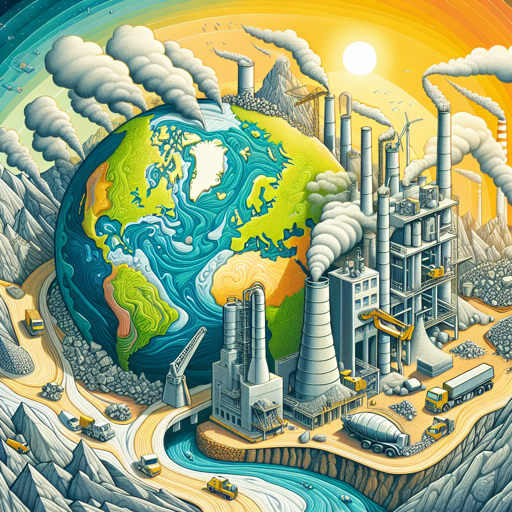The Environmental Challenges of Cement Production
Unearthing the environmental impact of one of the world's most widely used materials

Introduction
Cement, the seemingly innocuous gray powder that binds our world together, is one of the most widely used materials on the planet. But its production is also one of the most environmentally damaging, responsible for a significant portion of global carbon emissions. This article explores the environmental challenges faced by the cement industry.
The Environmental Impact of Cement
Cement production is a complex process that begins with mining and then grinding raw materials that include limestone and clay, to a fine powder. This raw material is then heated to produce clinker, which is ground with gypsum to create cement.
However, this process is far from environmentally friendly. The extraction of raw materials damages landscapes and habitats, while the heating process releases large amounts of carbon dioxide into the atmosphere.
Resource Depletion
Cement production requires large amounts of raw materials, including limestone, clay, and sand. The extraction of these materials often results in significant environmental damage, including habitat destruction and soil erosion.
| Raw Material | Percentage in Cement |
|---|---|
| Limestone | 60 - 65% |
| Clay | 20 - 25% |
| Others | 10 - 15% |
Carbon Emissions
The heating process, known as calcination, releases carbon dioxide (CO2) as a byproduct. In fact, for every tonne of cement produced, approximately one tonne of CO2 is released into the atmosphere. This makes cement production one of the major contributors to global carbon emissions.
Addressing the Challenges
The cement industry is well aware of these issues and is taking steps to improve its environmental performance. This includes investing in more efficient kilns to reduce energy consumption, using alternative fuels to cut CO2 emissions, and rehabilitating quarries to restore habitats.
“The cement industry is striving for sustainable production. But it’s a journey, not a destination.” - Anonymous
External Reference
For a more comprehensive understanding of the environmental impact of cement production, you can visit the World Business Council for Sustainable Development’s Cement Sustainability Initiative.
Conclusion
The environmental impact of cement production is significant, with issues ranging from resource depletion to significant carbon emissions. However, the cement industry is making strides towards improving its environmental performance. As consumers and industry participants, it’s crucial to support these efforts and push for more sustainable practices in cement production.